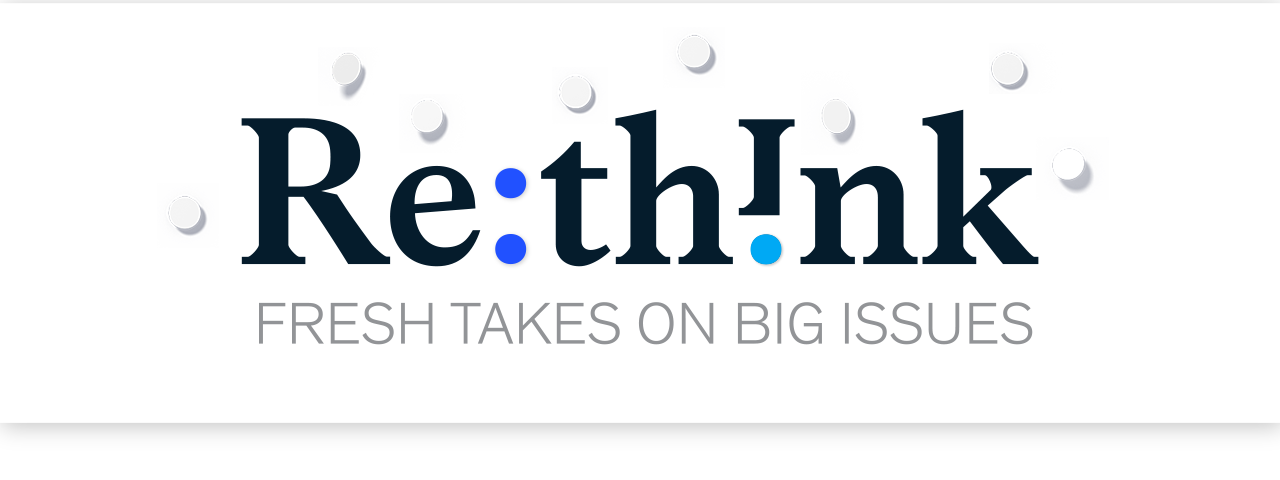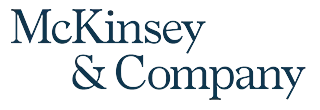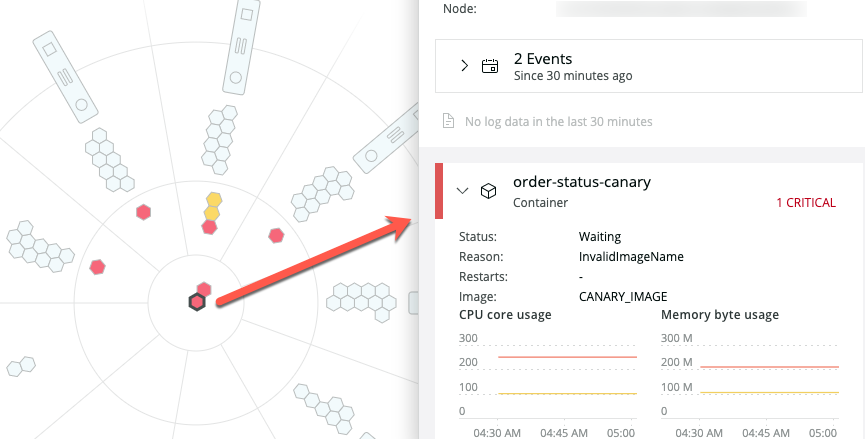Archives
- By thread 5224
-
By date
- June 2021 10
- July 2021 6
- August 2021 20
- September 2021 21
- October 2021 48
- November 2021 40
- December 2021 23
- January 2022 46
- February 2022 80
- March 2022 109
- April 2022 100
- May 2022 97
- June 2022 105
- July 2022 82
- August 2022 95
- September 2022 103
- October 2022 117
- November 2022 115
- December 2022 102
- January 2023 88
- February 2023 90
- March 2023 116
- April 2023 97
- May 2023 159
- June 2023 145
- July 2023 120
- August 2023 90
- September 2023 102
- October 2023 106
- November 2023 100
- December 2023 74
- January 2024 75
- February 2024 75
- March 2024 78
- April 2024 74
- May 2024 108
- June 2024 98
- July 2024 116
- August 2024 134
- September 2024 130
- October 2024 141
- November 2024 171
- December 2024 115
- January 2025 216
- February 2025 140
- March 2025 220
- April 2025 233
- May 2025 239
- June 2025 303
- July 2025 36
-
How COVID-19 caused a global learning crisis
the Daily read
Address the impacts .
Share this email 



AN ARTICLE A DAY, PICKED BY OUR EDITORS 
If you’re a parent of school-aged children, you’ve seen firsthand the pandemic’s toll on student learning and well-being—and its effects on families, teachers, administrators, and entire communities. Students around the globe are, on average, eight months behind where they would have been if it wasn’t for the pandemic. By 2040, unfinished learning due to COVID-19 could cost the global economy $1.6 trillion. So what’s the path forward for school systems? A new article explores what the global education community can do to address this unprecedented education crisis and help students get back on track. Be sure to check it out. — Joyce Yoo, digital editor, New York 
How COVID-19 caused a global learning crisis The pandemic has taken a substantial toll on students’ academic progress as well as on their mental health. School systems can respond across multiple horizons to help students get back on track. Address the impacts 

Quote of the Day —Vishwa Chandra, McKinsey partner, on the convergence of traditional restaurant delivery platforms and grocery delivery platforms in “Next on the menu for food delivery” 
Chart of the Day 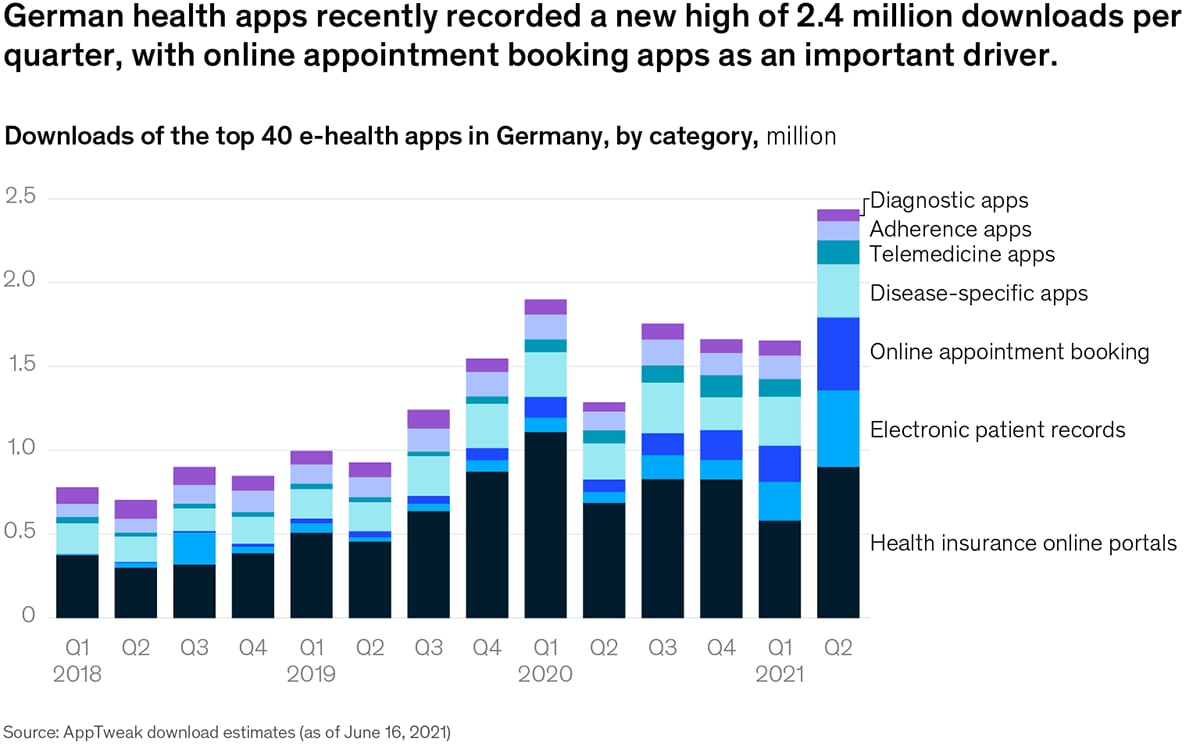
See today’s chart 
Also New 

Aging reframed: Seeing aging as an opportunity in healthcare An inspiring conversation about aging, women in leadership, and the chance to change the narrative on old age. Get a new perspective 


Singapore emerges as a new-business-building hub New infrastructure and funding sources, along with established practices, are helping traditional companies launch new businesses that can scale quickly. Download the report 


The McKinsey Crossword: All Alliterative | No. 70 27 across: Developing discontinuously. Can you solve it? Play now 


Follow our thinking 



Share these insights Did you enjoy this newsletter? Forward it to colleagues and friends so they can subscribe too.
Was this issue forwarded to you? Sign up for it and sample our 40+ other free email subscriptions here.This email contains information about McKinsey’s research, insights, services, or events. By opening our emails or clicking on links, you agree to our use of cookies and web tracking technology. For more information on how we use and protect your information, please review our privacy policy. You received this email because you subscribed to the Daily Read newsletter. Manage subscriptions | Unsubscribe Copyright © 2022 | McKinsey & Company, 3 World Trade Center, 175 Greenwich Street, New York, NY 10007
by "McKinsey Daily Read" <publishing@email.mckinsey.com> - 06:39 - 6 Apr 2022 -
The metaverse rises
Re:think
Defining the metaverse Internet searches for the term “metaverse” rose 7,200% in 2021. Those aren’t media mentions. That’s individual curiosity, a clear signal of how much people want to understand the term. The metaverse is a confusing term, because at this point it isn’t just one thing. For now, the metaverse is a combination of elements with the potential to create a vast virtual environment where new kinds of interactions and new kinds of B2C and B2B commerce are possible.
This integrated physical and virtual experience will have three core characteristics: immersive, interactive environments that use technologies such as virtual reality and augmented reality to give a sense of presence and mimic the realism of the real world; a modifiable but persistent state where you can build, create, and interact similar to the way you interact in the physical world; and a digital identity that is as valuable and unique as your physical identity.
People sometimes confuse the metaverse with the technologies that enable it. For instance, the metaverse is not virtual reality. Virtual reality is just a part of the metaverse tech stack, which has a lot of existing technologies and some that are incipient. For instance, 5G is essential for the metaverse. Great connectivity, particularly low latency, is your ticket to board the flight in, as it were. But you also need payments technology, cloud and edge infrastructure, 3-D developer tools, creator tools, security and identity platforms, virtual worlds and content, and even better devices and peripherals.
One big issue is that there’s no portability. What passes for the metaverse today is actually a set of microverses—you can’t move your avatar, social graph, virtual assets, and data seamlessly from, say, Fortnite to Roblox. That’s no good for the over 200 million monthly active users who spend an average of 2.5 hours per day on the services. That will have to change. Those gaming platforms are giving people—especially young people—new expectations for how they can interact online. They assume that they’ll be able to connect, create, and buy and sell in similar worlds. We’ll need a better trust architecture (which may be decentralized and very different from current models) if they’re going to do all that seamlessly across multiple platforms.
For now, I’d say we have just the glimmer of the metaverse. Given that, companies are asking tough questions: Is this all hype and a distraction? Should I pilot an experiment to learn about it? Is this an investable thesis that I should take seriously now? Is it such a serious pivot that I should worry about my core business? And if I can’t answer those questions with confidence, what should I do now?
For almost everyone, learning about the potential of the metaverse is a no-brainer. One great way to do so is to follow venture-capital (VC) funding. For example, Goldman Sachs estimated that there was $10 billion in venture funding for gaming and virtual worlds in 2021, more than twice the previous year. Seeing where the VC money goes can give companies a helpful perspective on what the metaverse might look like as it scales into something bigger.
200 million monthly users spend an average of 2.5 hours a day on Fortnite and Roblox
Experimentation can also be a great way to learn. To date, the experiments we have seen fall into three categories: brand integrations to extend existing experiences such as buying a virtual asset or NFT; ephemeral experiences such as the Gucci Garden; and persistent metaverse experiences such as we see in gaming. In the past few months alone, we have seen brands like Tommy Hilfiger, Forever 21, Ralph Lauren, Nike, NASCAR, and Warner Brothers launch metaverse plays. Experiments can be a way to open the window to the art of the possible—we may not fully know where they lead us, but we’ll certainly learn a lot in the process.
For experiments in the metaverse to work, companies may need to embrace open-ended investments, even small ones. In many cases, the people pushing for metaverse experimentation, who often come out of IT, haven’t tied the effort to a business case. Leaders may have to give them some leeway by expanding their tolerance for small failures. But the experimentation crowd must make more of an effort to think through the potential business value.
In addition, a lot of these technologies require expertise that most companies have in short supply. At this moment of sharp talent shortages, companies may not have the mix of engineering, software, analytics, and IT talent required to execute some of these ideas. Partnering with platform providers like Roblox or Decentraland can alleviate some, but not all, of this problem.
There are many obstacles and much uncertainty. It may well take a decade or more to fully build out the potential of the metaverse. There’s no hard-coded road map. For example, while today’s hype is about consumer use cases, enterprise or B2B cases may be the ones to scale first. Just like in the early days of the internet, it was not clear where it would go and how long it would take to develop, but we knew it was an exciting direction of innovation.
This feels like that kind of moment. Once again, technology is driving innovation into something that’s just around the corner, that could transform our experience in some unforeseen way. It reminds me that the potential of technology is infinite. That’s so humbling, and so inspiring.
ABOUT THE AUTHOR
Lareina Yee is a senior partner in the Bay Area office.
MORE FROM THIS AUTHOR
Confronting the early-career gender gap
To achieve workforce parity, businesses should apply the same practices they are using against the glass ceiling.
Ten things to know about gender equality
Since 2015, progress has been marginal, and now COVID-19 has hit women hard. We offer ten facts about gender equality that everyone should know.
IN TWO WEEKSShelley Stewart on diversity commitments
In the aftermath of George Floyd, companies made enormous efforts to diversity. Here’s how they can deepen those commitments.
This email contains information about McKinsey’s research, insights, services, or events. By opening our emails or clicking on links, you agree to our use of cookies and web tracking technology. For more information on how we use and protect your information, please review our privacy policy.
You received this email because you subscribed to our McKinsey Quarterly alert list.
Copyright © 2022 | McKinsey & Company, 3 World Trade Center, 175 Greenwich Street, New York, NY 10007
by "McKinsey Quarterly" <publishing@email.mckinsey.com> - 03:22 - 6 Apr 2022 -
The microchip industry is booming. How big could it be by 2030?
McKinsey&Company
What’s driving demand for chips .

A surging semiconductor sector In the news • Supply chain choke points. To counter the global chip shortage, chipmakers have sought to increase production. But a lack of chips is choking off the supply chain itself. For example, the CEO of one large supplier of chip-making equipment has said that his company can’t find enough chips to make its tools, resulting in long lead times. The biggest chip shortages aren’t in cutting-edge semiconductors but in the less sophisticated ones—those used in industrial equipment and cars. [Reuters] • New rules of car buying. People looking to buy a new car should expect to pay premium prices or be prepared to wait until next year. In 2021, carmakers produced about two million fewer cars than they did in 2019. Since their supply of chips is limited, auto manufacturers can’t build enough cars to satisfy consumer demand. In addition to making fewer cars, many automakers are assembling cars without advanced features like automatic parking or climate-control functions for rear seats. [MarketWatch] 
Semiconductor markets have boomed, with sales growing by more than 20% to about $600 billion in 2021, and the industry’s aggregate annual growth could average from 6 to 8% a year up to 2030. 
On McKinsey.com • Clamoring for chips. Ongoing semiconductor shortages have highlighted how tiny silicon wafers are critical to the production of everything from cars to computers. The chip industry is booming, following a wave of technological advancements, consumer demand for innovative products, and the rapid digitization of businesses. By 2030, McKinsey estimates that the global semiconductor market could reach $1 trillion. • What’s ‘driving’ demand. Which semiconductor segment will grow fastest? Chips for the automotive industry are likely to see the most rapid growth over the next decade, according to McKinsey analysis. Autonomous driving, e-mobility, and other advanced applications could contribute to a tripling of demand for chips used in cars. This segment could make up as much as 20% of industry growth from now until 2030. Read the full article for an analysis of future semiconductor markets and to learn which three industries will drive growth over the next decade. — Edited by Belinda Yu See the future of semiconductors 
Was this forwarded to you? Sign up here. Or send us feedback — we’d love to hear from you. 

Follow our thinking 


This email contains information about McKinsey’s research, insights, services, or events. By opening our emails or clicking on links, you agree to our use of cookies and web tracking technology. For more information on how we use and protect your information, please review our privacy policy. You received this email because you subscribed to the On Point newsletter. Manage subscriptions | Unsubscribe Copyright © 2022 | McKinsey & Company, 3 World Trade Center, 175 Greenwich Street, New York, NY 10007
by "McKinsey On Point" <publishing@email.mckinsey.com> - 10:16 - 5 Apr 2022 -
Don’t miss Remote Connect Day 2!
Don’t miss Remote Connect Day 2!
You can still register and watch Day 1's on-demand recording!Hi MD,
What a whirlwind of a first day! Our attendees can’t stop raving about the talks with Adam Grant and Arianna Huffington, and all of the great discussions on distributed teams.
It’s not too late to join the fun! See great Day 2 content April 6, 2022 at 7:00am UTC or 16:00 UTC, including discussions with Michael C. Bush and Priya Parker, insights on crypto, CEO panels, and more!
We’ll see you there!
— Remote TeamYou received this email because you are subscribed to Marketing communications from Remote Technology, Inc.
Update your email preferences to choose the types of emails you receive.
Unsubscribe from all future emailsRemote Technology, Inc.
Copyright © 2022 Remote Technology, Inc. All rights reserved.
18 Bartol St. #1163 San Francisco California
by "Remote" <hello@remote-comms.com> - 07:02 - 5 Apr 2022 -
Game on! Why your computer learns faster and games better than you think
the Daily read
The latest McKinsey for Kids .
Share this email 



AN ARTICLE A DAY, PICKED BY OUR EDITORS 
Are you smarter than your computer? Strides in technology and artificial intelligence mean there are now machines that can solve some problems better and faster than humans can. And games—from checkers to chess and beyond—have played a surprising role in teaching computers to think like humans. The latest edition of McKinsey for Kids looks closer at how and includes a few short quizzes, a feature on training a robot dog through reinforcement learning, and a peek at how this technology helped a sailing team win the Americas Cup. Don’t miss it, whether you’re young or just young at heart. — Joyce Yoo, digital editor, New York 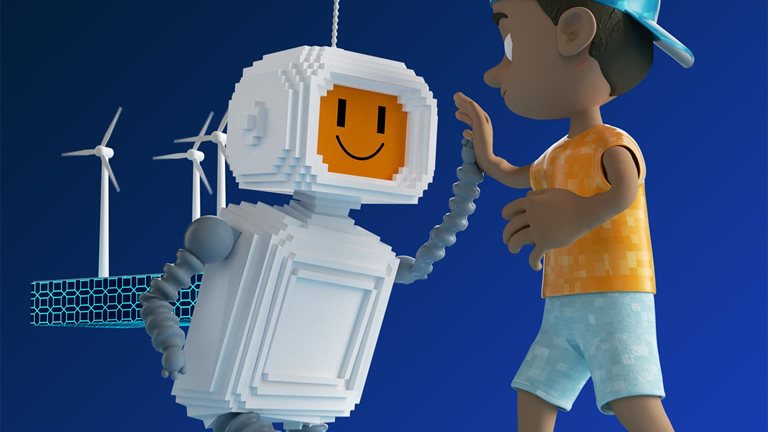
McKinsey for Kids: Game on! Why your computer learns faster and games better than you think Computers can solve some problems better and faster than humans can—but only after humans train the machines to use artificial intelligence. Let’s explore the world of gaming to figure out how. The latest McKinsey for Kids 

Quote of the Day “One of the best compliments I’ve gotten was that, as a female leader in board meetings or executive meetings, I tend to feel less of a need to fill the room. I step back a bit more and observe the room and see what could be a win–win for everyone. As women leaders, we all need to celebrate the fact that we add quite a bit of inspiration to the room because of the diversity and the energy that we bring.” —Violet Chung, McKinsey partner, on diversifying leadership in “Accelerating diversity in insurance” 
Chart of the Day 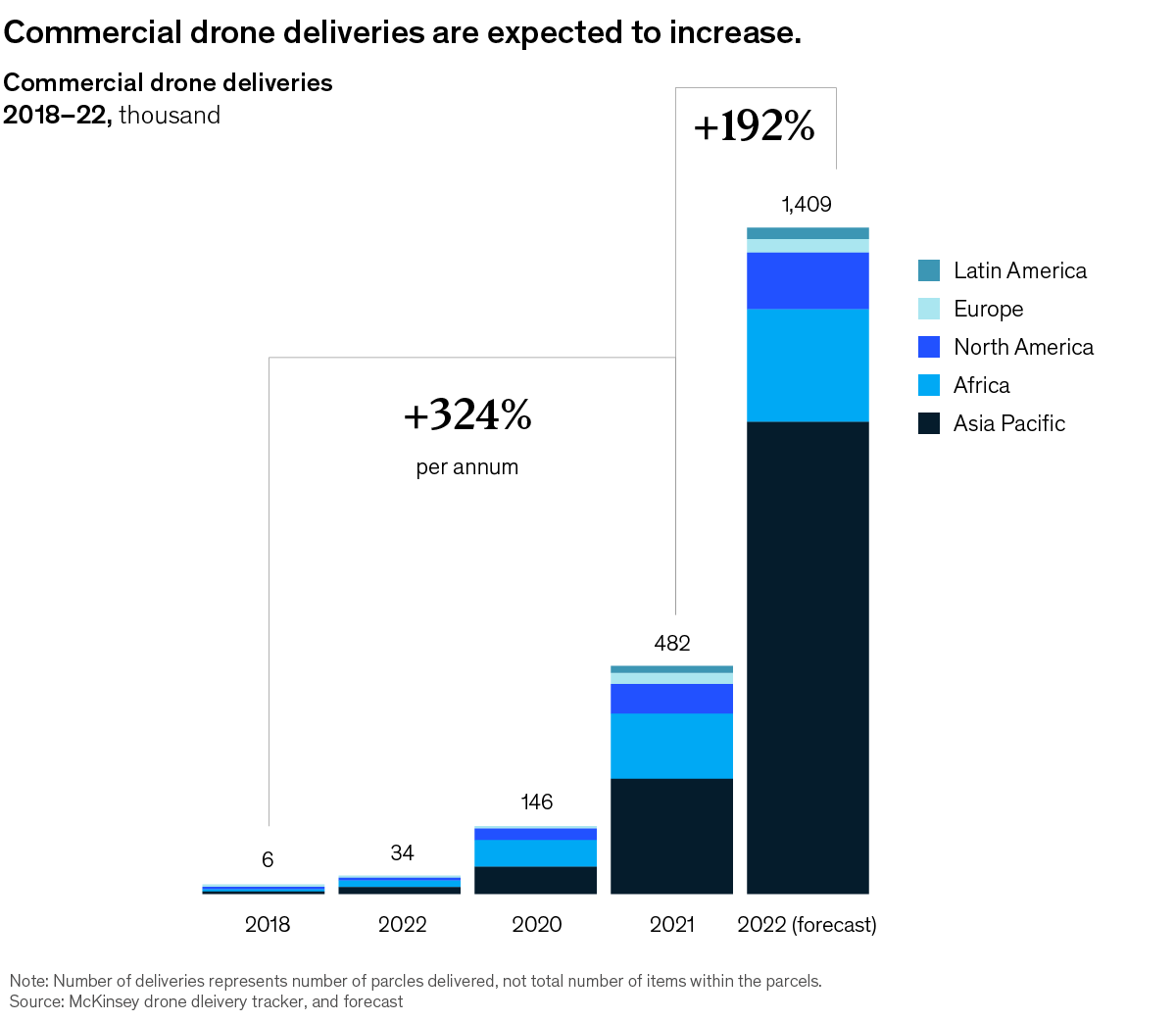
See today’s chart 
Also New 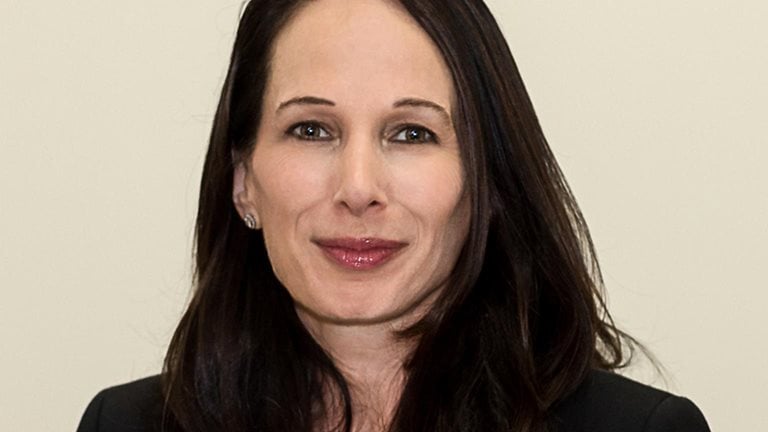

Author Talks: Open season for intelligence gathering Open-source intelligence means spying isn’t just for governments anymore—anyone with an online connection can gather troves of information. Follow the data 


The semiconductor decade: A trillion-dollar industry The global semiconductor industry is poised for a decade of growth and is projected to become a trillion-dollar industry by 2030. Look ahead 


How can corporate functions become more agile? Faster decision making, better interdepartment coordination, and a sharper focus on business priorities are much more possible with the thoughtful adoption of agile models. Stay on your toes 


Follow our thinking 



Share these insights Did you enjoy this newsletter? Forward it to colleagues and friends so they can subscribe too.
Was this issue forwarded to you? Sign up for it and sample our 40+ other free email subscriptions here.This email contains information about McKinsey’s research, insights, services, or events. By opening our emails or clicking on links, you agree to our use of cookies and web tracking technology. For more information on how we use and protect your information, please review our privacy policy. You received this email because you subscribed to the Daily Read newsletter. Manage subscriptions | Unsubscribe Copyright © 2022 | McKinsey & Company, 3 World Trade Center, 175 Greenwich Street, New York, NY 10007
by "McKinsey Daily Read" <publishing@email.mckinsey.com> - 06:13 - 5 Apr 2022 -
Kubernetes monitoring made simple
Microservices are awesome, but monitoring them can be...not awesome.
As you break down your monolithic application into microservices, or build brand new cloud-native applications, your teams gain more autonomy, speed, and freedom.
But troubleshooting containerized environments gets increasingly difficult as infrastructure is abstracted away from the people actually responsible for shipping and maintaining code.
Fortunately, New Relic One Kubernetes cluster explorer provides multidimensional views in a curated UI that simplifies complex environments and enables you to view, troubleshoot, and alert on the most important parts of your cluster.
To set up Kubernetes monitoring within New Relic One today, follow our Getting Started guide to activate your integration.
Happy Monitoring,
MaxNew Relic
188 Spear Street, San Francisco, CA 94105 US
by "Max from New Relic" <mfrancisco@newrelic.com> - 12:01 - 5 Apr 2022 -
BIAN + SmartBear: Enabling Open Banking Adoption and FinTech Innovation
Don't miss out! Join us to hear about SwaggerHub + BIANHey Abul,
It’s your last chance to register for Thursday’s webinar, BIAN + SmartBear: Enabling Open Banking Adoption and FinTech Innovation.
Don’t miss the opportunity to join an informative and interactive discussion regarding the role of APIs in the financial services industry and how robust standards developed by BIAN support increased security and innovation.We will cover:
- Standards & governance trends in the Fintech API development space
-
Benefits of open banking and partner ecosystem connectivity
-
A live demo of the BIAN model and landscape APIs using SwaggerHub
We hope to see you there—if you can’t make it, register anyway to receive a copy of the recording.
Molly Farmer
Senior Marketing Specialist at SmartBearThis email was sent to info@learn.odoo.com by SmartBear Software, 450 Artisan Way, Somerville, MA. 02145, 617.684.2600, www.smartbear.com. We hope you found this email of interest. However, we value your privacy. Please click here to Unsubscribe or manage mail preferences. Privacy Policy.
by "Molly from SmartBear" <swaggerhub-team@smartbearmail.com> - 10:50 - 5 Apr 2022 -
Remote raises $300 million Series C!
Remote raises $300 million Series C!
Valued at almost $3 billion, Remote is the fastest-growing company for supporting distributed workforces.Hi MD
I am excited and proud to announce Remote’s $300 million Series C round, led by SoftBank with participation from existing investors Accel, Sequoia, Index Ventures, Two Sigma Ventures, General Catalyst, and Gaingels.
Remote’s growth since our Series B round last year has been incredible. Our globally distributed team now includes around 1000 people in 65 countries. It is thanks to the diversity of our team and the strength of our asynchronous, fully remote culture that we have been able to grow so quickly.
Remote’s mission from day one has been to help create a world where every person and business truly belongs in the global market. This significant show of support from investors along with the rapid growth of our business is proof this need is not only palpable but the vision and solutions we offer are first-in-class.
Job van der Voort
CEO, RemoteReady to go global, but not sure how?
We've got you covered.You received this email because you are subscribed to Marketing communications from Remote Technology, Inc.
Update your email preferences to choose the types of emails you receive.
Unsubscribe from all future emailsRemote Technology, Inc.
Copyright © 2022 Remote Technology, Inc. All rights reserved.
18 Bartol St. #1163 San Francisco California
by "Job van der Voort" <hello@remote-comms.com> - 07:30 - 5 Apr 2022 -
Do you see getting older as a chance to thrive? Here’s how to better care for seniors.
McKinsey&Company
What healthy aging means .

On aging well In the news • Isn’t it ironic? Discriminating against older workers is an “unfair paradox”: employees are penalized after spending decades gaining experience. Globally, more than six million cases of depression are linked to ageism, per the WHO. Unfortunately, age bias is common: in a 2021 survey, nearly 80% of older workers stated that they have seen or experienced age discrimination. If you’re an older worker, strategies to combat ageism include confronting your own fears about aging and being prepared to respond to bias (for instance, by touting your technology skills). [CNBC] • The vanishing home-care worker. The thought of moving into a nursing home can fill some older adults with dread. A majority of Americans wish to be cared for at home as they age, but all over the country, home-care workers are hard to find, even as the population of US adults aged 65-plus is set to double by 2040. One report found that home-care staffers are quitting the field over low salaries and a lack of benefits. In most counties in one US state, home-care workers make $13.20 an hour—less than fast-food workers. [NYT] 
“If you think of old age as an opportunity for all of us to have a dignified life, then we are going to invest in services for older individuals.” 
On McKinsey.com • Not a burden, but a blessing. We need to change how we think about aging, says Ursel J. McElroy, director of the Ohio Department of Aging, in an episode of the McKinsey on Healthcare podcast. “Old age cannot be seen as a burden because we will tend to focus on things that are limited to cost containment,” McElroy says. However, if we view aging as a privilege, we’ll be “willing to invest in long-term strategy rather than short-term fixes,” she adds. Supporting healthy aging means understanding what older individuals desire from their lives and addressing their diverse needs and preferences. • Quality over quantity. Amid the COVID-19 pandemic, older adults are facing threats to their health, living arrangements, and social interactions. At the same time, we have the opportunity to make meaningful changes in how we care for our aging populations. “It’s not just about increasing the amount of time you’re on this earth; it is about the quality of time you have while you’re on this earth,” McElroy says. Read the full interview for three changes that would improve the experience of aging for us all. — Edited by Belinda Yu Reframe aging 
Was this forwarded to you? Sign up here. Or send us feedback — we’d love to hear from you. 

Follow our thinking 


This email contains information about McKinsey’s research, insights, services, or events. By opening our emails or clicking on links, you agree to our use of cookies and web tracking technology. For more information on how we use and protect your information, please review our privacy policy. You received this email because you subscribed to the On Point newsletter. Manage subscriptions | Unsubscribe Copyright © 2022 | McKinsey & Company, 3 World Trade Center, 175 Greenwich Street, New York, NY 10007
by "McKinsey On Point" <publishing@email.mckinsey.com> - 10:12 - 4 Apr 2022 -
How to handle your work jerk
the Daily read
Deal with discomfort .
Share this email 



AN ARTICLE A DAY, PICKED BY OUR EDITORS 
Have you ever worked with a freeloader or a micromanager? Then you know just how toxic some work jerks can be. In a new Author Talks interview, Tessa West talks about her new book, Jerks at Work: Toxic Coworkers and What to Do About Them, and explores difficult work relationships and how best to counter them. Rather than agonizing over the idea thief or backstabber, learn more about why it’s important to tackle office conflicts head on. Read more to take advantage of effective strategies for foiling bad behavior, including your own. Now get to work! — Emily Adeyanju, digital editor, New York 
Author Talks: How to handle your work jerk Half of the battle against toxic behavior is identifying your own inner jerk. Deal with discomfort 

Quote of the Day “Technology isn’t just for commercial use. New technologies are inherently dual use, and they also have military applications. This is a new era where there has to be more collaboration, more discussion, and more partnership between tech companies and the US government—and that’s challenging. Their incentives are not perfectly aligned, and it’s a work in progress.” —Amy Zegart, an academic and political scientist, on data collection in the government and the private sector in a new Author Talks interview 
Chart of the Day 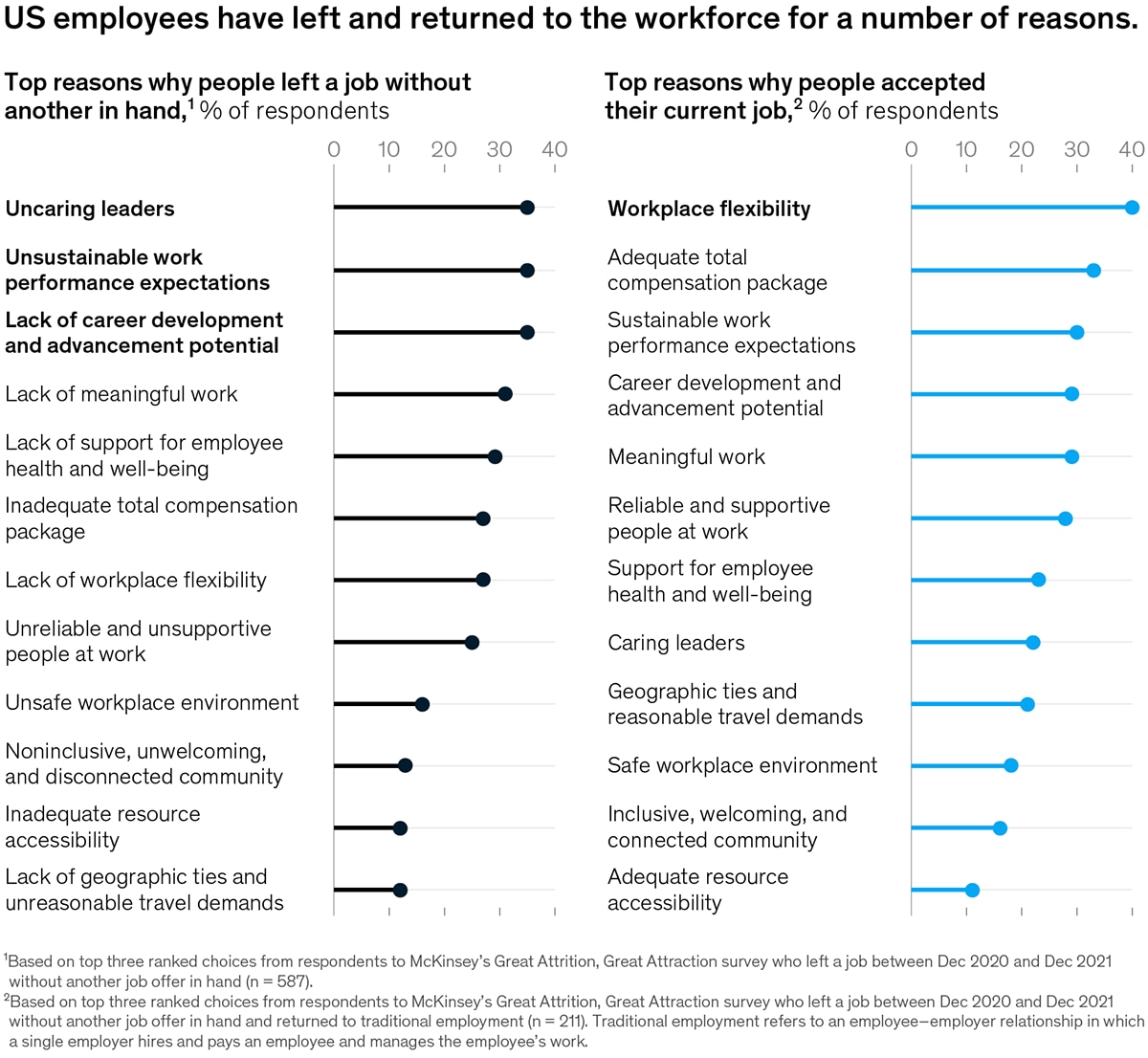
See today’s chart 
Also New 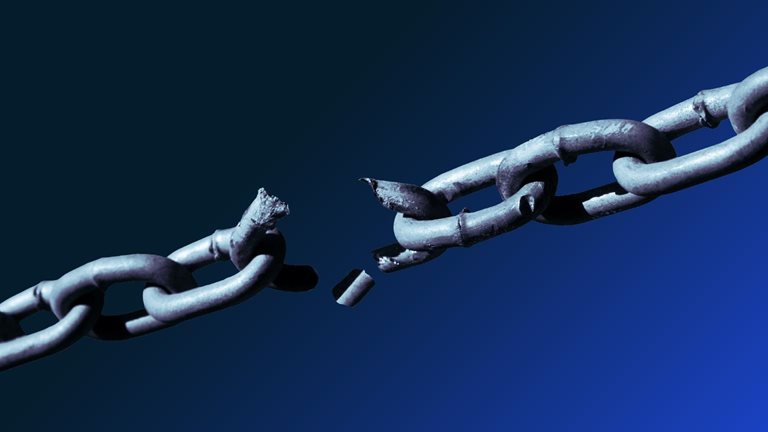

The rising toll of the war in Ukraine Lives lost and upended. Soaring food and energy prices. Supply chains at risk. Much is at stake as the war continues. Understand the crisis 


Accelerating diversity in insurance The picture of diversity in insurance varies across markets and companies. In this podcast episode, McKinsey experts explore the challenges of increasing diversity and the best places to start. Tactics for progress 


Next on the menu for food delivery Even as revenue soars, profitability is still a challenge. How can platforms and restaurants get their fill, and what does the future hold for all players in this complex ecosystem? Understand the evolution 


Follow our thinking 



Share these insights Did you enjoy this newsletter? Forward it to colleagues and friends so they can subscribe too.
Was this issue forwarded to you? Sign up for it and sample our 40+ other free email subscriptions here.This email contains information about McKinsey’s research, insights, services, or events. By opening our emails or clicking on links, you agree to our use of cookies and web tracking technology. For more information on how we use and protect your information, please review our privacy policy. You received this email because you subscribed to the Daily Read newsletter. Manage subscriptions | Unsubscribe Copyright © 2022 | McKinsey & Company, 3 World Trade Center, 175 Greenwich Street, New York, NY 10007
by "McKinsey Daily Read" <publishing@email.mckinsey.com> - 05:04 - 4 Apr 2022 -
Last chance - Biggest first annual conference: Remote Connect 2022 😍
Last chance - Biggest first annual conference: Remote Connect 2022 😍
Hi MD,
Remote Connect 2022 is tomorrow! Join us to gain insights and bold ideas to help us all build better, grow together, and level up in today’s competitive job market.
See you soon,
Remote
You received this email because you are subscribed to Marketing communications from Remote Technology, Inc.
Update your email preferences to choose the types of emails you receive.
Unsubscribe from all future emailsRemote Technology, Inc.
Copyright © 2022 Remote Technology, Inc. All rights reserved.
18 Bartol St. #1163 San Francisco California
by "Remote" <hello@remote-comms.com> - 08:02 - 4 Apr 2022 -
Tackling complex problems: A leader’s guide
Leading Off
Mental muscle .
Share this email 



ESSENTIALS FOR LEADERS AND THOSE THEY LEAD 
Problems, big and small, abound in business, society, and our personal lives. The ability to answer the seemingly simple question, “What should I do?” is becoming increasingly difficult as our environments grow more uncertain and complex. As a result, problem-solving skills are in great demand. McKinsey research shows that organizations that have top-quartile problem-solving capabilities earn 3.5 times higher total shareholder returns than those in the bottom quartile. This week, let’s explore some structured approaches that can improve your problem-solving aptitude. AN IDEA 
Clearly define the problem before rushing to solve it Albert Einstein once said, “If I were given one hour to save the planet, I would spend 59 minutes defining the problem and one minute resolving it.” Before you start thinking about solutions, you first must understand and clearly articulate the problem. In this episode of The McKinsey Podcast, Charles Conn, former CEO of Oxford Sciences Innovation and Rhodes House, describes a seven-step problem-solving process that can provide the structure and clarity needed to (perhaps counterintuitively) encourage creativity. The first step is to dedicate sufficient time to exploring and defining the problem and why it needs to be solved. The team can then disaggregate the various components of the problem, prioritize which of those have the biggest impact, and begin their analyses. Shortchanging this critical first step could lead to wasted time and resources (for example, if those resources are allocated to solving the wrong problems). 
A BIG NUMBER 85 That’s the percentage of survey respondents across Asia–Pacific Economic Cooperation (APEC) countries who identify problem solving as the most relevant 21st-century skill, according to Wiley’s Digital Skills Gap Index 2021. The World Economic Forum’s 2020 Future of Jobs report reveals similar sentiments among employers globally: critical thinking and complex problem solving top the list of skills of the future. In fact, four of the top five skills on the report’s “top ten skills of 2025” are directly linked to problem solving, indicating that employers believe these skill sets will only grow in importance. 

A QUOTE “Rookie problem solvers show you their analytic process and mathematics to convince you that they are clever. That’s sometimes called APK, the anxious parade of knowledge. But seasoned problem solvers show you differently.” That’s McKinsey alumni Charles Conn and Robert McLean in a McKinsey Quarterly article on six problem-solving mindsets to crack even the most complex problems under uncertain conditions. To start, they recommend channeling your inner four-year-old by staying curious and recognizing the power of asking questions. Next, embrace ambiguity, widen the aperture through which you view the problem, be willing to experiment, and crowdsource diverse perspectives to improve the ideas generated. And finally, return to an elementary-school activity: “show and tell” the problem-solving process and the logic behind the potential solution to drive decision makers to action. 
A SPOTLIGHT INTERVIEW 
Few businesses have experienced the need for effective problem solving as intensely as vaccine developers did during the COVID-19 pandemic. While pressure can sometimes feel debilitating, many pharma and biotech companies rose to the challenge. In this interview, Angela Hwang, Pfizer’s head of biopharmaceuticals, discusses how the company was able to develop and begin distributing a vaccine within eight months. “When the goal is so clear, what happens next is incredible problem solving that allows you to find the ‘white spaces’ and identify what you can remove to anticipate potential barriers,” she says. “Changing our goal setting and problem solving to match the issue at hand were probably the two greatest adaptions in leadership practices on this entire journey.” 
BUST YOUR BIASES 
When it comes to problem solving within a team, take extra care to not fall prey to individual biases and collective behaviors that may thwart efforts to come up with great solutions. One bias that may manifest itself in a brainstorming session is people’s desire to conform or avoid conflict. Anonymous brainstorming and silent voting are two ways to ensure that all ideas are considered and to prevent mediocre ideas from taking the spotlight. Similarly, drawing on analogies can spark inspiration—unless that analogy is only superficially similar to the problem at hand, in which case it can lead to futile solutions. To avoid this trap, set up exercises to map the similarities between the two problems, past and present, and the conditions under which the solution would work in the new context. Lead by first defining, then solving, problems. — Edited by Dana Sand, an editorial production manager in McKinsey’s Cleveland office 

Follow our thinking 



Share these insights Did you enjoy this newsletter? Forward it to colleagues and friends so they can subscribe too.
Was this issue forwarded to you? Sign up for it and sample our 40+ other free email subscriptions here.This email contains information about McKinsey’s research, insights, services, or events. By opening our emails or clicking on links, you agree to our use of cookies and web tracking technology. For more information on how we use and protect your information, please review our privacy policy. You received this email because you subscribed to the Leading Off newsletter. Manage subscriptions | Unsubscribe Copyright © 2022 | McKinsey & Company, 3 World Trade Center, 175 Greenwich Street, New York, NY 10007
by "McKinsey Leading Off" <publishing@email.mckinsey.com> - 02:06 - 4 Apr 2022 -
Do you video chat with your doctor? See the ten biggest trends in healthcare delivery.
McKinsey&Company
The future of care delivery .

Delivering health In the news • Workplace wellness. Digital health start-ups—companies that connect employees to mental-health services—are challenging traditional providers of employee assistance programs at a time when anxiety and depression are spiking. In 2021, investments in these companies doubled to $5.5 billion. The switch to virtual care during the COVID-19 crisis has enabled the rise of digital health platforms that offer a range of services, including sleep apps and mindfulness coaching. [Bloomberg] • DIY health. There is an abundance of do-it-yourself (DIY) healthcare tools to help people take control of their health. But wading through the glut of apps, at-home test kits, and gadgets can be tricky: for example, consumers can choose from some 350,000 health apps to screen or monitor symptoms. Doctors say that although these tools can help users determine when to seek in-person care, people should be wary of using at-home tests to self-diagnose, since DIY tools can’t provide the comprehensive information that a medical exam would. [WSJ] 
US consumers take proactive steps to manage their own health and well-being, spending between $300 billion and $400 billion out of pocket on health expenses every year. 
On McKinsey.com • Trading the whole person. US healthcare delivery is changing fast. Ten major trends are shaping the future of care delivery, according to healthcare leaders and McKinsey experts. One of these trends is “patient centricity”: healthcare that is convenient, transparent, and personalized. Recent McKinsey surveys show that people who use patient-centric providers are more likely than those who don’t to report greater satisfaction with their healthcare experience: they are 28% less likely to switch providers and five to six times more likely to use additional services. • Virtual visits. Consumer interest in digital healthcare has increased dramatically since the COVID-19 pandemic began. McKinsey analysis shows that virtual health visits grew by a staggering 38 times between February and April 2020. Booming investment and favorable consumer views will contribute to continued growth in virtual health: McKinsey estimates that about $250 billion in spending could be shifted to virtual settings. Explore the next frontier of care delivery and the actions that industry leaders can take to ride the next wave of innovation. — Edited by Belinda Yu Explore healthcare’s evolution 
Was this forwarded to you? Sign up here. Or send us feedback — we’d love to hear from you. 

Follow our thinking 


This email contains information about McKinsey’s research, insights, services, or events. By opening our emails or clicking on links, you agree to our use of cookies and web tracking technology. For more information on how we use and protect your information, please review our privacy policy. You received this email because you subscribed to the On Point newsletter. Manage subscriptions | Unsubscribe Copyright © 2022 | McKinsey & Company, 3 World Trade Center, 175 Greenwich Street, New York, NY 10007
by "McKinsey On Point" <publishing@email.mckinsey.com> - 12:48 - 4 Apr 2022 -
The week in charts
the Daily read
Cybersecurity spending, the value of a clean-fuels system, and more .
Share this email 



ALL THE WEEK’S DATA THAT'S FIT TO VISUALIZE 
Our Charting the path to the next normal series offers a daily chart that helps explain a changing world—during the pandemic and beyond. In case you missed them, this week’s graphics explored organizations’ increasing cybersecurity spending, the resources companies need to lower their carbon footprints, the biggest priorities for chief human resources officers, why consumer packaged goods companies are behind on their autonomous supply chain planning, and the potential infrastructure shift for gas utilities. FEATURED CHART Cybersecurity blanket 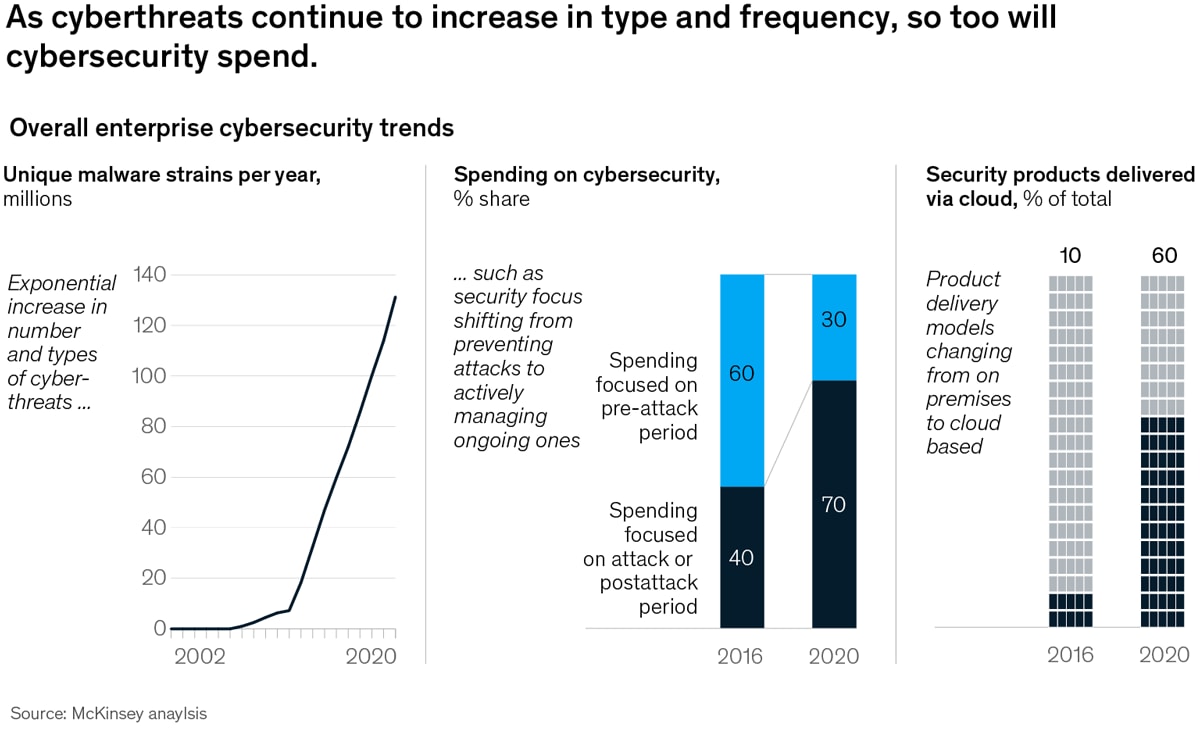
See more 



This week’s other select charts Green steely resolve All the right moves Supply chain planning—streamlined A clean-fuels future 

Follow our thinking 



Share these insights Did you enjoy this newsletter? Forward it to colleagues and friends so they can subscribe too.
Was this issue forwarded to you? Sign up for it and sample our 40+ other free email subscriptions here.This email contains information about McKinsey’s research, insights, services, or events. By opening our emails or clicking on links, you agree to our use of cookies and web tracking technology. For more information on how we use and protect your information, please review our privacy policy. You received this email because you subscribed to The Week in Charts newsletter. Manage subscriptions | Unsubscribe Copyright © 2022 | McKinsey & Company, 3 World Trade Center, 175 Greenwich Street, New York, NY 10007
by "McKinsey Week in Charts" <publishing@email.mckinsey.com> - 03:16 - 2 Apr 2022 -
The war in Ukraine and navigating an uncertain future
McKinsey&Company
Plus, how to achieve higher-quality life .
Share this email 



Monthly Highlights, April 2022 The Russian invasion of Ukraine is causing the greatest humanitarian crisis in Europe since World War II. Thousands of lives have been lost, and millions of livelihoods have been disrupted. This month, our featured stories offer an initial framing of the challenges caused by the war, a perspective on the short- and midterm disruptions, and scenarios for the potential impact on livelihoods in the eurozone. Other highlights in this month’s issue include the following topics: - how humanity could add as many as 45 billion extra years of higher-quality life over the next decade
- employees who left a job without another in hand, who returned and why, and how companies can begin to bring more workers back into the fold
- ten things the world has learned through the course of the pandemic
Editor’s choice 

War in Ukraine: Lives and livelihoods, lost and disrupted As uncertainty weighs on decision making, scenarios can provide guidance. Understand the implications 





The rising toll of the war in Ukraine Lives lost and upended. Soaring food and energy prices. Supply chains at risk. Much is at stake as the war continues. Understand the crisis 




THIS MONTH’S HIGHLIGHTS 
Adding years to life and life to years At least six years of higher quality life for everyone is within reach. Aim high 

Gone for now, or gone for good? Nearly half of the employees who voluntarily left the workforce during the pandemic aren’t coming back on their own. Employers must go and get them. Here’s how to start. Understand employee priorities 

Ten lessons from the first two years of COVID-19 On the second anniversary of the pandemic, we take stock. Look back 
Here comes the 21st century’s first big investment wave. A surge of investment in hard assets will pressure already strained supply chains and project delivery systems. CEOs who transform their capital strategy fast—and first—may win a competitive edge. Prepare for big changes 

IoT comes of age McKinsey research shows that adoption of IoT technologies has increased exponentially the past five years—but successful implementation still eludes some. Here’s how to get it right. Connect physical and digital worlds 

Private markets 2022 The private markets comeback that began in the second half of 2020 gained momentum in 2021, yielding a year of records. Read the report 
ALSO NEW Reimagining HR: Insights from people leaders Author Talks: Attributes—not skills—determine whether you ‘cut it’ or not How business operations can respond to price increases: A CEO guide Six customer experience pitfalls to avoid The $773 billion question: Inflation’s impact on defense spending From risk management to strategic resilience Repairing the broken rung on the career ladder for women in technical roles Author Talks: How to handle your work jerk The five zeros reshaping stores Building next-generation B2B sales capabilities The role of the board in preparing for extraordinary risk 
SPECIAL FEATURES 
The Next Normal McKinsey experts and industry executives envision the space industry’s next decade. Understand the future of space 

McKinsey on Books Explore this month’s best-selling business books, prepared exclusively by NPD BookScan. See the lists 
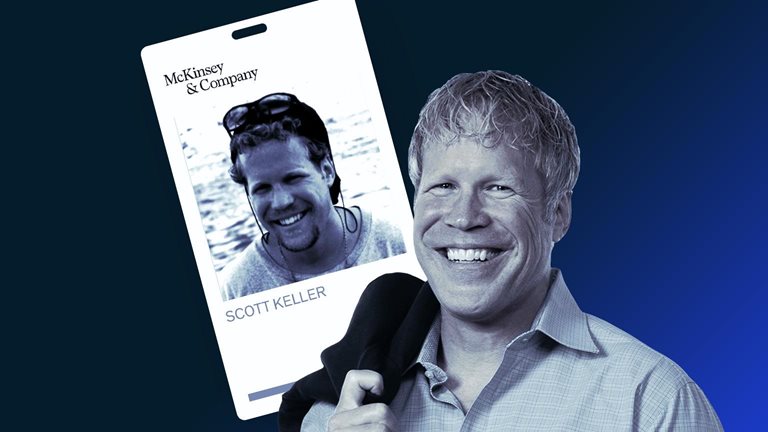
My Rookie Moment McKinsey senior colleagues discuss what inspired them to leap into authorship. Watch episode 7 
McKinsey for Kids This interactive series tells stories about our work to help you understand what McKinsey does and why it matters, whether you’re 16 or 64. Get smart 
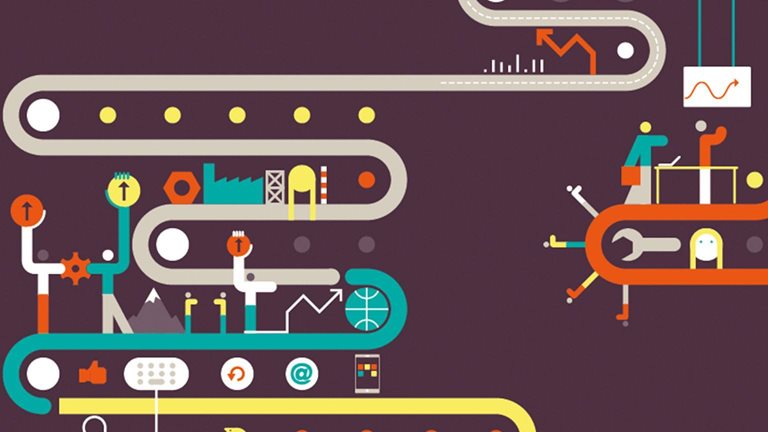
McKinsey Classics Economic growth is fueled by an expanding pool of workers and their rising productivity. Read “A productivity perspective on the future of growth.” Rewind 

Mind the Gap Read a sample of Mind the Gap and sign up for it or any of our more than 40 free email subscriptions. Subscribe — Curated by Eleni Kostopoulos, a digital publishing manager in McKinsey’s New York office 

Follow our thinking 


McKinsey Insights - Get our latest
thinking on your iPhone, iPad, or Android


Share these insights Did you enjoy this newsletter? Forward it to colleagues and friends so they can subscribe too.
Was this issue forwarded to you? Sign up for it and sample our 40+ other free email subscriptions here.This email contains information about McKinsey’s research, insights, services, or events. By opening our emails or clicking on links, you agree to our use of cookies and web tracking technology. For more information on how we use and protect your information, please review our privacy policy. You received this email because you are a registered member of our Monthly Highlights newsletter. Manage subscriptions | Unsubscribe Copyright © 2022 | McKinsey & Company, 3 World Trade Center, 175 Greenwich Street, New York, NY 10007
by "McKinsey Highlights" <publishing@email.mckinsey.com> - 11:54 - 2 Apr 2022

